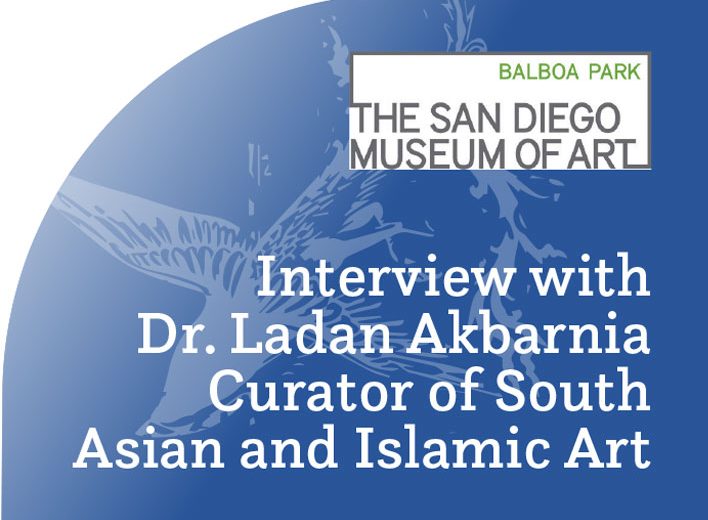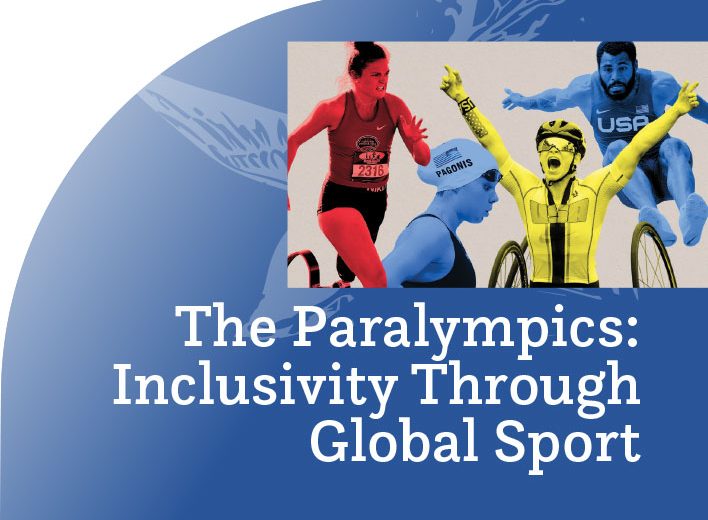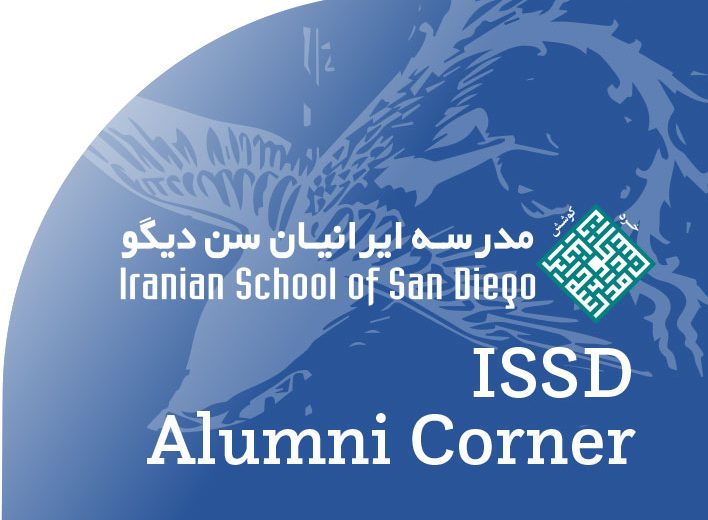 Conversations with Kiarostami by Godfrey Cheshire
Conversations with Kiarostami by Godfrey Cheshire
Edited by Jim Colvill
Foreword by Ahmad Kiarostami
Translations by Tania Ahmadi
Publisher: The Film Desk (2019)
Conversations with Kiarostami collects for the first time a far-ranging series of interviews with the celebrated director Abbas Kiarostami by film critic, and Iranian cinema expert, Godfrey Cheshire.
Conducted in the 1990s, these in-depth conversations offer a film-by-film account of Kiarostami’s views of his artistic development from his first short Bread and Alley in 1970 to the 1999 feature The Wind Will Carry Us, covering his lesser known, and seldom written about, shorts from earlier in his career, along with the masterworks that made him world famous, such as the Koker Trilogy (Where Is the Friend’s House?, And Life Goes On, Through the Olive Trees), Close-Up and Taste of Cherry. The book includes a Foreword by Ahmad Kiarostami, the director’s son, as well as an introduction from Cheshire that contextualizes the interviews and discusses his relationship with the director.
“During Godfrey’s several visits to Iran throughout a decade, he formed a relationship with my father that I had rarely seen him having with other writers. I believe this is because of Godfrey’s ability to go beyond the surface; his unique views and interpretations…It is well-known that Godfrey was one of the first people who introduced the Iranian cinema to America and, yet, there is no trace of the usual “exotic” approach…That is what you will find in this book: a refreshing conversation with Abbas that has substance, and is far from cliché.”—Ahmad Kiarostami, from his foreword.
“For Kiarostami’s own overview of his early career, I’d recommend Conversations with Kiarostami by the critic and filmmaker Godfrey Cheshire.”—Richard Brody, The New Yorker
Published by Woodville Press. Perfect bound softcover. 188 pages. Edition of 750.
ABBAS KIAROSTAMI, THE FILMMAKER AND THE MAN: AN INTERVIEW WITH GODFREY CHESHIRE
by Matt Zoller Seit July 26, 2019
Like a lot of American movie fans, my first exposure to the work of the great Iranian filmmaker Abbas Kiarostami came through the writings of my friend Godfrey Cheshire, a veteran critic and film programmer who’s now a contributor to RogerEbert.com. Godfrey worked alongside me in the 1990s in the film section of the now-defunct alternative weekly New York Press. He became friends with Kiarostami around that time, via the New York Film Festival, and subsequently visited him regularly in Teheran. Godfrey also started building an impressive body of writing about the director’s filmography and getting to know him as a person. Soon thereafter, Godfrey became one of the few American film critics to be welcomed by the Iranian government and trusted as someone who understood and appreciated the work of one of the nation’s great artists.
Over the next couple of decades, up through Kiarostami’s death in Paris in 2016, Godfrey recorded many conversations between them. These are collected for the first time in “Conversations with Kiarostami.” The book is being released around the same time as a major retrospective of Kiarostami’s work at New York City’s IFC Film Center, curated by Janus Films. In addition to the major features, the retrospective includes screenings of many rarely-seen Kiarostami short films. Godfrey will be present for two talks, on July 27 and August 3, and will participate in a discussion August 4.
A conversation about Godfrey’s book and the film series appears below. To order “Conversations with Kiarostami,”
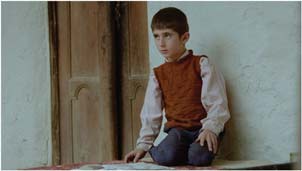
Can you start by telling us about the Abbas Kiarostami retrospective?
It starts at the IFC Center and will run there two weeks starting today, Friday, July 26. It is the largest retrospective that has ever been done of his work in this country, and it includes a lot of restorations of virtually all of this films. They are really beautiful restorations.
There are two things that I think are most noteworthy about the retrospective. One is that it includes a trilogy of his most important films, the Koker trilogy, all together. The Koker trilogy has very rarely been shown publicly as a unit, or as three films together. I think the chance to see those films on a big screen together is a great opportunity for people, whether they’ve seen other Kiarostami films, or these three films, in the past or not.
The festival also includes a lot of films from early in his career that have basically never been shown. A lot of shorter films, short features—and these things are really fascinating. I just encourage people who live in New York City to dive in and see as many of those films as they can.
How can people see Kiarostami films if they don’t live in New York?
The Koker Trilogy will come out on DVD in August from the Criterion Collection next month. As for a lot of those earlier short films, they don’t have release plans at the moment. I’m sure they will eventually be released.
For the benefit of people who have never experienced Abbas Kiarostami’s cinema before and would like to sample it, what would you say is the best movie to start with?
I was lucky, in that the first four Kiarostami features I saw were some of the most accessible and the most immediately gratifying, and those were the first two films of what’s known as the Koker trilogy, “Where is the Friend’s House?” and “And Life Goes On.” To that I would add the other film of the Koker trilogy, “Through the Olive Trees.” If you see those three films consecutively, they really are fascinating. So I definitely recommend those.
And then the other film from that period that was the one that grabbed me the most was “Close-Up,” and “Close-Up” I think is also a great place to start with Kiarostami. It is so fascinating on so many levels. I’ve shown that film in all sorts of different situations to all sorts of different audiences, and it’s the one Iranian film I’ve shown that everyone is really taken with.
How did knowing Abbas Kiarostami alter your understanding of his work?
I considered him a very good friend. We became better friends as the years went by.
You know, it’s an interesting question as to how you see the work of people who you know versus those you don’t know. When I was starting my career as a critic, for a number of years I lived and wrote in North Carolina, and during that time I thought I was lucky not to know filmmakers, because I thought it might influence my opinion. I liked having the distance that I did in that situation. But after I moved to New York and began getting to know filmmakers personally, I felt like, on the contrary, that enriched my understanding of their work in some cases.
And in the case of Kiarostami, it definitely changed my outlook, in the sense that I got to know him well enough that I saw a kind of autobiographical dimension in his work that I don’t think I would have seen, or seen as clearly, if I hadn’t known him personally.
And you know, I’ve gotten to know other directors too and I think in telling those cases, it’s not necessarily that I see an autobiographical dimension, but I do see their personalities at work in the films. Other directors I’ve gotten to know personally include Terrence Malick, David Lynch, and Oliver Stone, who you also know. And I think if you spend time with people like that and you see certain qualities that they have, you really see them manifest those qualities in their films. It could be quirky little things, but it’s really a way of seeing the world.
I think that one thing that draws me to the films of all the directors who I just named are a kind of vision that has to do with the way they perceive life, and also the way that they perceive film and how it communicates.
Those two things together constitute the vision that they have, the vision that is what I think people respond to in their films.
Did you think of Kiarostami as having a special view of life before you had met him, or was that perception something that followed as a result of your personal interactions with him as you became friends?
No, I think that he had this vision all along. But it was after I got to know him that I saw in films that he made, you know subsequent to that but also prior to that, things about his life and his personality that I could perceive more clearly the better I got to know him.
Can you give me an example of what you’re talking about?
Sure. His second feature, and the second of only two features that he made prior to the Revolution, is called “The Report.” It’s about a man whose life is falling apart in a couple of ways. He’s having trouble with his wife and he’s having trouble at work too—he’s accused of a kind of a malfeasance. And it was in getting to know Kiarostami that I saw the trouble in the man’s marriage, especially as something that came out of his life.
And this is something that he told me about: when I asked him why he didn’t leave Iran at the time of the Revolution, as so many filmmakers did and other people. He said, “It was because I was having a revolution in my own home.” By which he meant that his marriage was falling apart.
And that was something that affected him in his own work in various ways from then on.
I can really point to a particular example of how knowing this aspect of his life really influenced the way I saw his films, and that was with “Certified Copy,” which came later. To me, this film is reflecting on the cost of this kind of marital breakdown. And it was a film that he couldn’t make during the time he was making films in Iran. It was made in Italy, as you know, in the latter stage of his career. And he could only make it there, because only making a film outside of Iran allowed him to portray adult men and women interacting intimately in a way that wouldn’t have been permitted in Iran. So in that film, finally, he addresses marriage in a way that I think he had wanted to do much earlier, and that he had done previously only prior to the Revolution, in “The Report.”
In what way would you say Kiarostami was a political filmmaker, and how is was his ability to express himself politically affected by the ways Iran changed over the decades?
I don’t think that Kiarostami was a very political filmmaker in the sense that the phrase is typically understood, and when I talked to him about questions like this, he said he really wasn’t interested in making films that were very direct about politics or sociology or anything like that. That wasn’t what he was interested in as a filmmaker.
But I do think that, at the same time, there was a real political dimension to his films, in the sense that he expressed things that involved politics, but in a way that was kind of multi-layered. He had a poetic approach to cinema that allowed different meanings off of different levels.
What do you mean by that?
I’ll give you an example. In the film “Close-Up,” this pseudo or quasi-documentary about a young man who gets arrested for impersonating the filmmaker Mohsen Makhmalbaf, one of the things that is interesting to Kiarostami, and that is expressed in this film, is the sense that Iran has certain kinds of disquiet at that time. This was 1989, a decade after the Revolution, where it was still class [inequities] that a lot of people thought might be overcome by the Revolution but were not—they remained in place. So I do think, that in a sense, “Close-Up” reflects on the aftermath of the Iranian Revolution and the dreams that it left unfulfilled. So there is a political sense in that perception, and I think it is something that was conscious on the part of Kiarostami.
And yet you can’t say he set out to make a political film. He set out to make a film about this particular case that had these different resonances that included political resonances.
And another example is the film “And Life Goes On,” the second film in the Koker Trilogy, where a filmmaker based on Kiarostami drives out to this earthquake-stricken area to see if the kids who acted in his previous film had survived the earthquake. When I interviewed him about it, I deemed you could take this whole situation as a kind of a metaphor for the Iranian Revolution and the aftermath to it. It’s like, the Iranian Revolution hit Iran much as this earthquake hit this particular region of Iran. It was shocking and sudden and left some people disoriented and some people dead. And he understood that, and he said that that was basically correct. So there is this dimension of political implications in that film that are conscious on his part.
But again, he didn’t set out to make a political film there. He set out to make a film about the experience that he had had while driving into this earthquake-stricken region.
That’s interesting. It almost reminds me of the way that science-fiction writers couch their political musings in metaphor if they’re living under authoritarian regimes.
I agree with that. I think that that’s true. But as I say, I don’t think that he was sort of “hiding” a political meaning inside these other things. I think that the political dimensions to the film were sort of natural parts of the stories he set out to tell and that his basic approach really was poetic.
Incidental? Like, emerging incidentally from him following his muse?
Yeah, exactly. Exactly.
Were you self-conscious at the beginning of your relationship with him about being an English-speaking white guy from the United States talking to this preeminent Iranian director?
No, not really. I first met him in New York when he came here with Through the Olive Trees at the New York Film Festival, and I just, I felt a real rapport with him from that very first meeting. I mean, he was very…he was a really very genuine and kind person, and David Hudson wrote about my book for Criterion Daily that what came across to him in my interviews was that Kiarostami was a very open and generous person, and I think that was really the case. I think that he didn’t look at me as a “white guy,” “American guy,” or whatever. He just looked at me as a person, and fortunately he liked the person he saw. But I think he was genuinely open and available to lots of people, and he was really a pleasure to be with and to talk to.
Did you get a sense of him as being in any way a troubled or neurotic or driven person? So many directors are.
Yeah, I think that Kiarostami was all of the things that you’ve said: calm and reflective. But on the other hand, I do think that he had depths to his personality, and there were some depths there that were troubled at various times in various ways, and there were certain kinds of obsessions that he worked out through his filmmaking and through his artistry.
And I also think that he kept busy almost more than any other filmmaker I know, in the sense that when he wasn’t working on a film, he was writing poetry, he was making furniture for his house, he was doing photography. He was a very creative person, and it almost seemed to me like that creativity had a lot to do with just keeping going and dealing with his interior life by pushing it outward.
Can you tell the story about the structure of “Close-Up” again? It came about almost as a result of an accident, right?
Well, what happened was I asked him in my interview why the film that I saw first, which was at this festival of Iranian films, which was the first big exposure I had to Iranian cinema, it was in 1992 in New York, that was one thing, that was one version of the film. And then when I saw it again later and every time subsequently it was edited somewhat differently. And he explained that early in the film’s career, he was at a festival in Germany and the projectionist mixed up the reels and he was about to go up into the projection booth and try to get the guy to straighten him out – and then he realized he kind of liked it better. And so he went back and re-edited in the film in the way that it had been shown incorrectly in German.
That’s amazing to me. It’s almost like they’re such different filmmakers, but it reminds me of a story about the making of “2001: A Space Odyssey.” The popular perception of Stanley Kubrick is as somebody who not only had a plan but always executed it meticulously, and there’s not a single thing on screen that he didn’t intend to be there. In what’s arguably his greatest movie of all, one of the masterstrokes is that you don’t see the aliens, or whatever it is that’s causing all these myterious things to happen. But this recent book by Michael Benson reveals that he always wanted to show the alien but he could just never come up with an impressive enough alien. And he got to the end of the production process and it was like “Well, we’re out of time and money. I guess we’re not showing the alien.” And of course 50 years later that’s one of the things that people praise about the movie! “What incredible intellectual discipline, not to show the alien!”
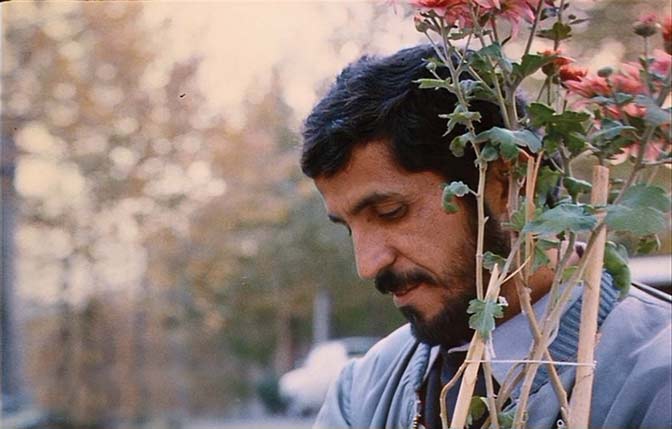
Yeah, exactly. The “Close-Up” story also reminded me of something Jean-Luc Godard said. During his revolutionary period in the late 60s, there was one or two of his films where he said the projectionist should flip a coin to decide which order to show the reels in. He also said at a certain point that if a film was good, it didn’t matter which order you showed the reels in.
My first wife rented “The Deer Hunter” from the video store in the ‘90s, and it was on two cassettes. The first cassette was the wedding followed by the Vietnam section, and then the second cassette was the group of soldiers coming home. She accidentally put the second cassette in first. Not only did it play fine, she liked it better than the actual order the director had intended. From that point on, whenever that film was mentioned, she always that said she preferred the original cut.
That’s hilarious!
I wanted to ask you about what, to me, is one of the most amazing quotes I’ve ever heard from a major filmmaker. At one point you say to Kiarostami, “I have a theory that there are two types of filmmakers. One kind, if you took away the cinema, they would turn to some other medium like painting or music or writing. The other kind, if you took away cinema they wouldn’t know what to do, they’re only about cinema.”
And he says, “I’m the first kind. Sometimes I wouldn’t mind if they took cinema away from me. I wouldn’t say I wish they would, just that I would mind if they did.”
Yeah, yeah.
How do you feel about that? It’s almost inconceivable to me that someone could devote their life to expressing themselves so eloquently in a particular medium and then say that they wouldn’t mind if it were taken away from them.
That response was very true and very accurate to who he was. I had that idea of the different kinds of directors, one kind or the other, for a long time, but I think I asked him that question because I perceived that he was the kind that could gladly go on to another medium. And in fact, he did go on to other media throughout his life, and he was so much that way that if cinema was taken away from him, it wouldn’t bother him that much. He would be able to express himself in any number of other media.
But the other thing that I would say about that is that I perceive that as he got more and more famous through the 90s—and that was a question I asked after he won the Palme d’Or at Cannes in ’97—I perceived that this increasing fame and the expectations it engendered were a little bit onerous to him. That part of it was not entirely gratifying. And if he could have escaped to something else, he might really have wanted to do that.
After he won the Palme d’Or the next film that he did was “The Wind Will Carry Us,” and I felt like that film in a way reflected his dissatisfaction with where he was in life. It reflected a sense of entrapments and sort of unhappiness with where he was.
And so I think that he turned away from…I mean, “The Wind Will Carry Us” was his last celluloid film, the last sort of conventional big feature that he made in Iran. Thereafter he only made small digital films, or he worked outside of Iran. And so I think that when he talks about how he could have easily gone to another medium, it was reflecting the sense that cinema was maybe something that, at times, he wanted to escape from.
Is there a moment from your personal relationship with Kiarostami when you felt like you understood him in a new way, or that maybe disabused you of any preconceived notions you might have had?
Yes. The first two parts [of the interviews] were about the first two films I mentioned to you earlier, features that he made before the Revolution, “The Traveler” and “The Report.” Well, “The Traveler” is about a boy that going to all sorts of extremes in terms of tricking adults and basically stealing from kids in order to get to Tehran to see a soccer match.I asked him if this was a critique of a certain aspect of the Iranian character, and he said no, that he would never make a film approaching it like that. Basically he was saying that this boy was a reflection of himself. He wasn’t criticizing something abstract like the Iranian character. If anything, he was criticizing himself.
And the same sort of thing happened when I asked him about “The Report.” I asked him if the main character, the man whose life is falling apart, whose marriage is falling apart, was a critique of a certain way that an adult middle class male behaved in Iranian society and the kind of character he had. Again, Kiarostami said no, he would never approach it like that. Basically he was saying again that this guy was more a reflection of him rather than kind of a general type.
And I think all that that really helped me get over approaching some of his films as kind of intellectual statements from an objective standpoint, and to see them more as very personal reflections of his own thinking and feeling and experience.

I sometimes wonder if, as critics, we aren’t reflexively looking for the larger meaning when in fact the smaller one may be the only meaning that was intended, and perhaps the only one that, as viewers, we actually need.
I think that you’re right, in the sense that the smaller meaning is maybe where the story comes from, is where the story originates, and is what is most important to the filmmaker, the artist.
But I also think that in the case of Kiarostami, he read a lot of poetry, he knew a lot of poetry, he thought a lot about poetry in the way that a lot of Iranians do. It’s so important to their culture and to their heritage. And I think that he would say the greater meanings that are there in any work are there, but it’s not where they start.
And yet I think he would also say that the original meanings and smaller meanings are not where they should end, either.
When you think of your friendship with Kiarostami, is there a particular image of him that comes to mind?
Kiarostami loved to drive. He’s completely the opposite of me in that regard. I don’t like to drive, I don’t even like to ride in cars. But he loved it, and as Kiarostami fans know there are a lot of scenes of driving in cars in his films, and for different reasons. Not only did he like it but being in a car in Iran, you’re in something that’s both a private and a public space. So one of my most vivid memories of him is of driving, driving, driving with him.
When I was doing these interviews there came a point where we realized that we didn’t have the time left before he had to leave the country to finish the interviews at the pace that we had been doing them, so he suggested that he drive me up to the village in Koker to show me that, and that we could do the interviews as we drove, we’d continue them. Koker is like five hours from Tehran, so we had this long drive up there, we spent time there, and then we drove back.
So we talked all the way, but he told me when I was sitting in the passenger seat that in “Taste of Cherry,” where you have the main guy who’s trying, hoping to commit suicide, talking to people that he wants to help him by disposing of his body after he does so, and there are three main people that her talks to through the movie – they’re in the passenger seat, he’s in the drivers’ seat. And Kiarostami told me that those people were never in the car together: the two people that you see were never there together, that when the guy in the drivers’ seat is talking to the other passengers, it was actually Kiarostami in the other seat that he was talking to. And likewise, when you saw the passengers, they weren’t talking to the person that you saw who was driving.
And that really gave me a chill up my spine to think that that’s the way that he did it, but it also says something about how personal all of this was to him, this film and really all of his films.
Source: Roger Ebert.com – MZS. A blog by Matt Zoller Seitz
Matt Zoller Seitz is the Editor at Large of RogerEbert.com, TV critic for New York Magazine, the creator of many video essays about film history and style, a finalist for the Pulitzer Prize in criticism, and the author of The Wes Anderson Collection. His writing on film and TV has appeared in The New York Times, Salon, New York Press, The Star-Ledger and Dallas Observer.

